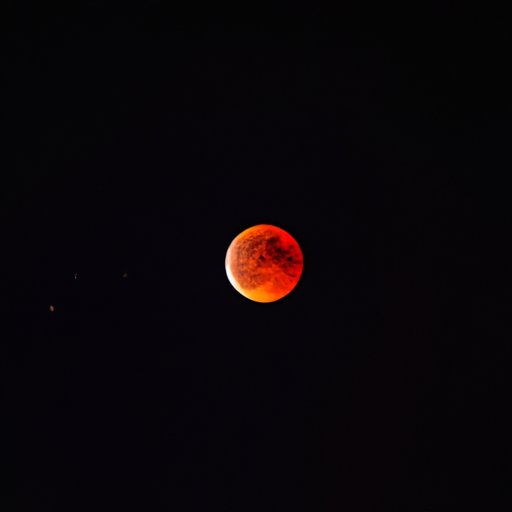Introduction
A red moon is a rare and breathtaking phenomenon that has captivated human beings for centuries. The sight of a glowing crimson orb in the sky is a reminder of the awe-inspiring beauty of the natural world and our place in the universe. In this article, we will explore the scientific, mythological, and cultural significance of a red moon, as well as the history of human observations of lunar eclipses.
The Science Behind a Lunar Eclipse: Why the Moon Turns Red
A lunar eclipse occurs when the Earth passes between the sun and the moon, casting a shadow on the moon’s surface. During a total lunar eclipse, the moon appears to turn a reddish-orange color, which is why it is often referred to as a “blood moon.”
So, how does the moon turn red during a lunar eclipse? The answer has to do with our atmosphere. As sunlight passes through the Earth’s atmosphere and reaches the moon, the atmosphere’s molecules scatter the light, filtering out shorter-wavelength colors like blue and green and leaving longer-wavelength colors like red and orange to reach the moon’s surface.
The Mythology and Meaning of a Blood Moon: Exploring Why the Moon Turns Red
Across cultures and throughout history, people have assigned various meanings and beliefs to a blood moon. In some cultures, a lunar eclipse is seen as a sign of impending doom or a time of great change. In others, a blood moon is regarded as a time of spiritual growth and renewal.
The mythology and symbolism associated with a red moon have evolved over time. In ancient times, a lunar eclipse was thought to be caused by a dragon or other beast that was trying to devour the moon. In more recent history, lunar eclipses have been viewed through a more scientific lens, but they continue to carry rich cultural significance.
Uncovering the Mysteries of an Eclipse: Investigating the Cause of the Red Moon
Scientists have been studying lunar eclipses for centuries, and recent technological advancements have enabled them to gain new insights into the causes of the red coloring. One recent study found that particles from the Earth’s upper atmosphere can cause the moon’s surface to take on a reddish tint during a lunar eclipse.
These findings contribute to our growing understanding of the universe and how the forces of nature interact with each other. By studying phenomena like lunar eclipses, we can gain a deeper appreciation for the complexity and beauty of the natural world.
From Superstition to Science: Tracing the Curious History of a Red Moon
Throughout history, people have observed and documented lunar eclipses, often attributing supernatural or mystical powers to the phenomenon. In ancient times, a lunar eclipse was believed to signal the wrath of the gods or the onset of an important battle.
As our understanding of the universe has expanded, we have come to view lunar eclipses through a more scientific lens. However, they continue to inspire awe and wonder, and many people still find meaning in the ancient myths and beliefs associated with a red moon.
The Awe-Inspiring Beauty of a Lunar Eclipse: Understanding the Phenomenon of a Red Moon
Lunar eclipses are some of the most mysterious and breathtaking events in the natural world. The sight of a glowing red moon is a testament to the power and beauty of our planet’s natural systems.
Furthermore, lunar eclipses can evoke feelings of awe and connection to the universe. When we witness a lunar eclipse, we are reminded of the vastness and complexity of the world around us.
Looking Up at a Red Moon: How a Common Occurrence Can Still Capture Our Imagination
While lunar eclipses are a common occurrence in the solar system, they continue to capture our imagination and inspire us in profound ways. The sight of a red moon can evoke feelings of wonder, mystery, and connection to the natural world.
As we continue to explore the universe and uncover its mysteries, we must not forget the importance of moments of beauty and awe. The natural world is full of wonders, and we have much to gain from simply looking up at the sky and marveling at the sight of a red moon.
Conclusion
The red moon is a phenomenon that has fascinated human beings for centuries. From ancient myths and beliefs to modern scientific discoveries, we have assigned various meanings and explanations to the sight of a lunar eclipse.
But at the heart of it all is a sense of wonder and awe at the natural world and our place in it. We must continue to explore and appreciate the mysteries of the universe and cherish the moments of beauty that remind us of the magic of existence.
